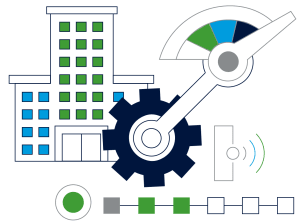This article answers the following questions:
- How to calculate jurisdictional top-up tax?
- How to calculate top-up tax of a constituent entity?
- How to calculate parent entity's allocable share of top-up tax?
In order to calculate the liabilities imposed on taxpayers by the Pillar 2 regulations, it is necessary to analyse a great deal of information concerning the activity of the entity and understand a number of rules and regulations. Therefore, entrepreneurs might be prone to mistakes. This means that it is a good idea to take a closer look at the most important issues and become familiar with the whole tax settlement process step by step. Last time we explained how to calculate the effective tax rate according to the guidelines included in the latest version of the draft act on top-up taxation of constituent entities of international and domestic groups. This time we are presenting the formulae for computing top-up tax under the income inclusion rule.
Necessary steps to calculate top-up tax
Taxpayers are obliged to calculate top-up tax on account of ownership interests in low-taxed constituent entities.
Low-taxed constituent entities are explored in more detail in our previous article.
To fulfil that obligation, the taxpayer must make the following computations:
- calculate jurisdictional top-up tax (in respect of a given jurisdiction);
- calculate jurisdictional top-up tax attributable to a low-taxed constituent entity (top-up tax of a constituent entity);
- calculate top-up tax of a constituent entity attributable to the taxpayer (parent entity's allocable share of top-up tax).
The resulting amount of the top-up tax payable by the taxpayer parent entity is the total of the allocable shares of top-up tax.
Learn more about our services
Jurisdictional top-up tax
To calculate the jurisdictional top-up tax, the taxpayer must apply the following formula:

Note that:
- top-up tax percentage is the difference between the minimum tax rate (15%) and the effective tax rate (which we described in the previous article of the series). For example, if the effective tax rate (ETR) is 8%, the individual tax rate amounts to 7% (15%–8%);
- excess profit is the difference between a jurisdictional qualifying net income and a substance-based income;
- additional top-up tax is any amount of incremental top-up tax arising from the recomputation of the effective tax rate and top-up tax as a result of the adjustment of covered taxes or a qualifying income or loss;
- qualifying domestic top-up tax in the amount due means such an amount of qualified domestic top-up tax which is not the object of court or administrative proceedings initiated on the basis of non-compliance.
Top-up tax of a constituent entity
Top-up tax of a constituent entity is calculated according to the following formula:

It is the way of allocation of jurisdictional top-up tax (concerning the whole jurisdiction) to low-taxed constituent entities located in that jurisdiction. Such top-up tax is allocated only to those constituent entities with a qualifying income (it is not allocated to constituent entities with a qualified loss).
Parent entity's allocable share of the top-up tax
The final step in the computation of jurisdictional top-up tax is to calculate the parent entity's allocable share of top-up tax according to the following formula:
![]()
The parent entity's allocable share mentioned above is a percentage amount calculated according to the additional formula:

Once the above data are calculated, the parent entity's allocable shares of top-up tax must be totalled up. The result of this equation is the final top-up tax payable by the given taxpayer.
As you can see, the computation of top-up tax under the income inclusion rule consists of many stages, is quite complicated, and requires the understanding of many rules and gathering of a large amount of data. Taking into account the complexity of the process, we recommend that all taxpayers promptly take steps to analyse whether or not the company is subject to top-up tax. If you have any questions or doubts as to this matter, feel free to contact our experts today.








